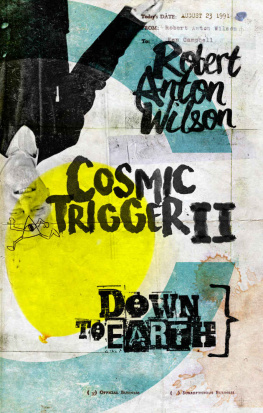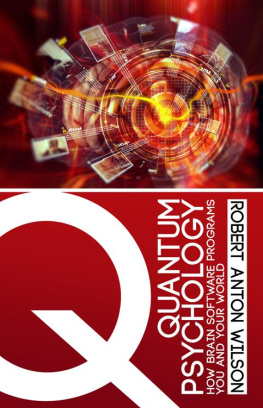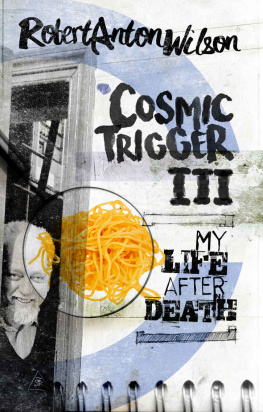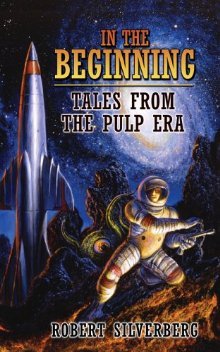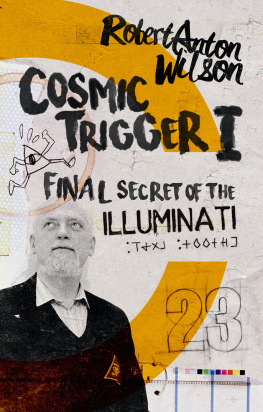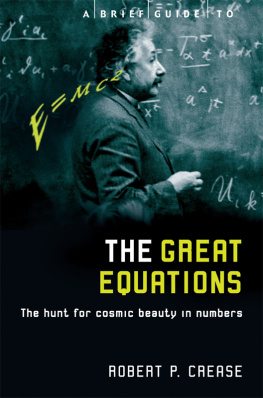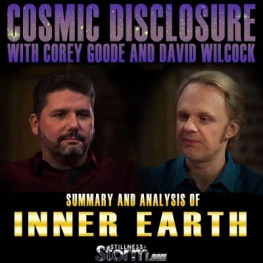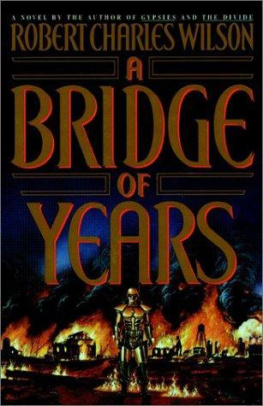Robert Anton Wilson

Copyright 1991 Robert Anton Wilson
All rights reserved. No part of this book, in part or in whole, may be reproduced, transmitted, or utilized, in any form or by any means, electronic or mechanical, including photocopying, recording, or by any information storage and retrieval system, without permission in writing from the publisher, except for brief quotations in critical articles, books and reviews.
ISBN-13: 978-0-9987134-6-5
First Printing 1991
Second Printing 1993
Third Printing 1995
Fourth Printing 1996 (Revised Second Edition)
Fifth Printing 1997
Sixth Printing 1999
Seventh Printing 2000
Eighth Printing 2002
Ninth Printing 2005
Tenth Printing 2009
Eleventh Printing 2011
Second Edition 2019, Hilaritas Press
eBook Version 1.0 2019, Hilaritas Press
Cover Design by amoeba
eBook design by Pelorian Digital
Hilaritas Press, LLC.
P.O. Box 1153
Grand Junction, Colorado 81502
www.hilaritaspress.com
You can only go half-way
into the darkest forest;
then you are coming out
the other side.
Chinese proverb
Dedication
This book is FOR
R. Buckminster Fuller,
in memory
It is AGAINST
the makers of war,
in anathema
Mine eyes have seen Saddam Hussein
The Koran on his knee
A-typing out communiqus
For all the world to see:
"Our missiles just hit Tel Aviv
And God is full of glee,
Islam goes marching on!"
Onward, Christian soldiers.
Children of the Beast!
Kill! Kill! Kill! for Jeee-sus!
Fight till you're deceased!
PRRRRRRRFFFFFFFFFT!
the bridge persists
more than symbol, more than sermon
the bridge persists
COSMIC TRIGGER II
Down To Earth


Foreword
By Tom Jackson
Robert Anton Wilson wrote Cosmic Trigger II while living in California. I bought my first copy of the book in the very un-Californian city of Tulsa, Oklahoma, at the Peace of Mind Bookstore, during the 1990s. Peace of Mind remains open, and although this RAW title can be dated to a specific moment in American history, it too still feels vital and relevant a sturdy bridge from then to now. I have been writing a daily blog on Wilson since 2010. Wilsons optimism, his wit, his range of interests and his insistence on the importance of every single individual all attracts me. If you want to know why Wilson fascinates me, this book might show you why.
Wilson first triggered readers with his 1977 boo k Cosmic Trigger I: The Final Secret of the Illuminati . It became one of his most popular and best-loved books. Ive read it over and over myself, but maybe I lik e Cosmic Trigger II: Down to Eart h a little better.
Cosmic Trigger I I came out in 1991, fourteen years after the first book in the Cosmic Trigger series. Let's compare it with the sequel you hold in your hands.
Cosmic Trigger: The Final Secret of the Illuminati , as the title hints, immediately followed the ground-breakin g Illuminatus ! novels, co-written with Robert Shea. Published as a personal memoir , Cosmic Trigge r featured about 55 short chapters, with a foreword in the original edition by Timothy Leary and an afterword by Saul-Paul Sirag, one of the California scientists Wilson hung out with in the Bay area. (The Hilaritas Press edition published in 2016 adds a new introduction by British author John Higgs.) And/Or Press put out the original edition of Cosmic Trigger ; followed by the mass market paperback I read with the imprint of Pocket Books, a major publisher. Daisy Eris Campbell, the daughter of British theater legend Ken Campbell, adapted Cosmic Trigger for a play successfully staged in Britain in 2015-2017. Hilaritas Press also put it out as an audiobook, narrated by Oliver Senton, who played Wilson in Campbells play.
Cosmic Trigger II: Down to Earth , also a memoir, has about 90 short chapters and emerged with less fanfare (it had no guest appearances by Timothy Leary or anyone else) but was nonetheless greeted with great anticipation . New Falcon, a small press put it out. New Falcon would go on to publish many of Wilson's works. The trilogy was completed with 1995 s Cosmic Trigger III: My Life After Death , wherein the author offers a tribute to Robert Shea, who had died in 1994, but the book is primarily the wild wisdom of a longtime reality wrangler who, in one chapter, muses over his own experience of death by cyber-hoax.
Cosmic Trigger I I feels, as the books subtitle says, down to earth, and while it continues many of Wilsons themes and ideas, a shift in tone from volume one seems noticeable. Aliens from another star do not communicate with the author. The Illuminati do not appear in the title and do not seem prominent in the text. Wilsons friend and intellectual influence Leary appears in passing but does not loom as large as in other books.
Instead, we get a memoir that deals with prosaic day to day matters, and which to me seems easier to relate to than Wilsons earlier volume. Magick devotees love the firs t Cosmic Trigger , and while I love it, too, I cant say I have ever performed an Aleister Crowley ritual, much less communicated with aliens from Sirius.
I have, however, wondered if I would have a successful romantic relationship, struggled to find a sense of purpose, dealt with moments of loss and depression and reflected on how my childhood influenced my adult life all themes Wilson deals with very vividly i n Cosmic Trigger II.
Similarities between volumes one and two do appear. A unifying metaphor for the firs t Cosmic Trigge r is Chapel Perilous, which one enters while undergoing the trials of seeking into the nature of reality. The secon d Trigge r has a similar metaphor about crossing a bridge, and a real bridge looms large in the narrative, as you will see.
Cosmic Trigger I I begins with Wilsons birth in 1932 and ends, like Shakespeares comedies, with his marriage to his beloved wife, Arlen, which lasted 42 years until her natural death in 1999. Although nonfiction, the memoir in places feels like a novel because of Wilson's careful attention to structure.
As the reader advances through the pages, a series of different plot-lines begin to reveal themselves. Wilson abandons the Catholicism of his youth and searches for a better life philosophy. He struggles with the pull of the Civil Rights movement of the 1960s and wonders if he should risk arrest by participating in a protest. In his twenties during the 1950s, he searches for love and a life partner and at times despairs of finding one. In one particularly dramatic moment, he considers a dreadful ultimate solution.
All of these plot-lines advance and interact with each other, giving the book the dramatic tension of fiction and a satisfying beginning, middle and end. The short sketches that constitute the books chapters represent some of Wilsons most evocative writing. One feel s ther e with him when a nun whips the author in front of the class or forces him to go without lunch. Such scenes convince m e Cosmic Trigger I I could be an excellent introduction to Wilsons work.

